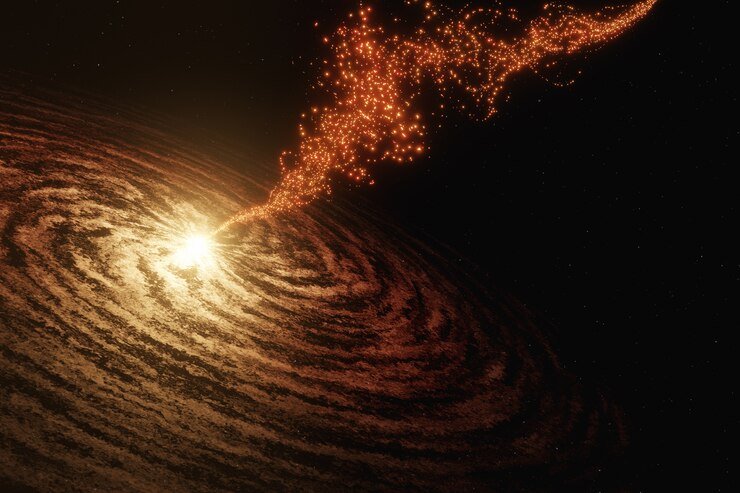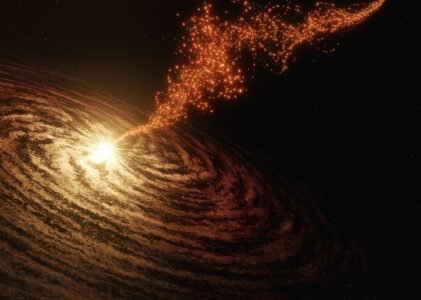WHAT IS THE LARGE HADRON COLLIDER?

The Large Hadron Collider (LHC) is the largest particle accelerator ever built. It is also the most powerful of them. It’s 27 km long..
WHAT’S A PARTICLE ACCELERATOR? WHAT DOES IT DO? HOW DOES IT WORK?

A particle accelerator is used to produce and accelerate subatomic particles.
It manages to do so by producing strong electrical and magnetic fields which manage to accelerate the particle. The magnetic field is used to give the beam of particles a specific direction, which helps to focus the beam at a specific point. The magnetic field, responsible for acceleration, helps in collision as sparks of energy are released by the collision of “bunches” of protons, travelling at near-lightspeed. This helps us to study the aftermath of the collisions, which form the framework for Particle Physics.
Dipole magnets (smallest simple magnet) help in maintaining direction and changing direction requires the use of Quadrupole magnets (four bar magnets). Particles moving through the “centre” of the positions of the bar magnets go straight through, thereby ensuring a continuity in direction of motion. The quadrupole magnets ensure that all particles go through the centre since particles would have their own magnetic field, which would end up interacting with either of the north and the south pole, being repelled or attracted by either of these two.
So, if you had multiple particles passing through the LHC, quadrupole magnets would ensure that they’re collinear to each other, following a path along a line which passes through the centre. Via calculations, we can ensure that the opposite magnets which attract the particle would produce an effect on it which cancels out, which would help us to focus the stream of particles in a specific direction (which we want).
This effect is used to ensure that collisions between particles do happen, because at random the chance of a collision happening is greatly reduced, in comparison to the chance of collision when the particles are focused in a particular direction.
WHAT PROBLEMS DOES IT SOLVE FOR US?

The particles that we know of currently, have mass. But we never knew the reason behind them having mass, until we got to know about the Higgs Boson. Higgs Boson exerts its influence around the entire universe creating what is known as a “Higgs Field”. This field gives particles the mass they have.
The mass of a particle is directly proportional to the number of times it interacts with the Higgs field. The Higgs boson has a spin of zero, so a non-spinning particle would be a higgs boson, since no other particle has a spin of zero. Higgs boson was discovered by examining a particle at CERN which behaved exactly liked it, leading us to the conclusion that it was the Higgs Boson. When we observe two photons going opposite to each other, we’ll calculate the invariant mass (mas with respect to center of frame being used as the reference due to relativistic effects(of the higgs boson by manipulating the equation E^2=m^2c^4+(pc)^2 => mc^2=sqrt((net E)^2-( net pc)^2). We’ll do this again and again and plot the results. In the experiment, if there’s a change in the mass, it will be the mass of the higgs boson, which will be in the form of a peak in the graph, because after neutrons, the Higgs is the second heaviest particle known.
The invariant mass must be equal to the mass of the higgs boson to confirm its presence, and the mass of the higgs boson was obtained experimentally. The higgs field itself gives it the mass it has, since it has a greater tendency to give itself mass, rather than giving other particles mass, explaining its mass. After all, it’s the only particle which has the same mass at all temperatures.
ARE THERE ANY TYPES OF PARTICLE ACCELERATORS?

Yes, different types of particle accelerators do exist. There are 6 types of particle accelerators:- (tbc=to be continued)
Cyclotrons
Works like a cycle…
- It repeatedly propels a beam of charged particles (for eg- protons) in a circular path which helps in accelerating the particle.
- It has “dees”, which…..tbc
?tbc
accelerate
- To be contd….
?tbc2
some
- particles!
The following topics regarding the LHC and particle accelerators will be examined in the next post :-
- TYPES
- REAL LIFE APPLICATIONS
- +other interesting mechanisms at play concerning quantum mechanics and, in particular, The Higgs Boson
Here’s a video explaining this content-


